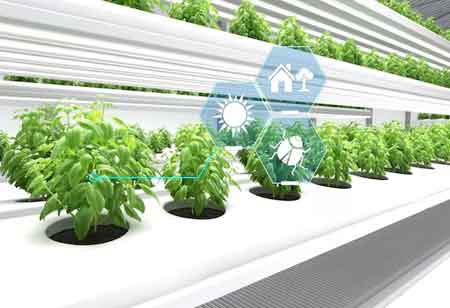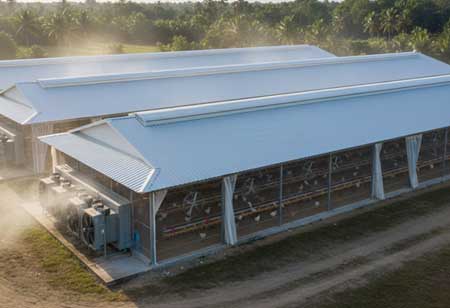Thank you for Subscribing to Agri Business Review Weekly Brief
Post-harvest Management to Improving Food Quality
There is no universal definition of good food and nutrition; food does not necessarily translate into it.

By
Agri Business Review | Monday, April 10, 2023
Stay ahead of the industry with exclusive feature stories on the top companies, expert insights and the latest news delivered straight to your inbox. Subscribe today.
Valuing daily life quality also means valuing every individual's food. Science reveals that to function well daily, humans require a variety of vitamins and minerals from fresh, healthy, and nutritious food.
FREMONT, CA,: There is no universal definition of good food and nutrition; food does not necessarily translate into it. The nutrient value of any food may have been diminished by processed and industrial production's terrible shortcuts. Food quality is perhaps a greater problem than most of us think.
Enhancing food quality is crucial since it guarantees that people consume healthy and wholesome food. Maintaining the weight, quality, and amount of commodities while concentrating on food quality also protects them against contamination. Food quality can be raised in a variety of ways nowadays, especially during post-harvest processing.
Preserve nutrients and micronutrients
A food's nutritional value is equally as important as its taste in determining its quality. Better post-harvest management practises, such as better storage and efficient transportation options, guarantee that the food we eat arrives at our doorsteps with the necessary nutrients. Rice, wheat, and other grains that are exposed to pollutants and pests during the post-harvest season are vulnerable to nutritional loss. As a result, it is necessary to deploy safe post-harvest facilities to maximise the natural nutrient content in any food.
Eliminate or lessen synthetic chemicals in food production
When handled properly, pesticides, insecticides, and fumigants all have benefits and can considerably lower agricultural losses. The consequences that these artificial chemicals have on our bodies' health must also be considered. Smaller doses of pesticides used over an extended period can produce chronic pesticide poisoning, however, larger doses can cause severe acute poisoning. This causes a variety of health problems, ranging from minor headaches to an overall loss of health.
Pesticides are applied on crops to assist prevent bug infestations while they are being stored. To prevent post-harvest losses, this is frequently carried out several times. There is, however, a quicker and healthier option. Without the use of harmful chemicals, insect populations can be effectively controlled by storing goods in gas- and moisture-tight containers.
Carbon dioxide can be employed to create a controlled atmosphere to eliminate pests and prevent infestations along with the use of these containers. In addition to being safer and healthier, this method eliminates the possibility of chemical contamination. Better storage options reduce the risk of hazardous chemical exposure for both customers and food handlers.
Farmers, traders, and processors have traditionally used fumigation to safeguard agricultural commodities against infection. Each year, post-harvest handling can result in millions of dollars worth of crops being ruined due to insect infestation. Also, the loss of food during harvest season has a terrible impact on the world's population and represents significant resource waste. In the past, fumigants like carbon disulfide and hydrogen cyanide have been employed to alleviate this problem, meanwhile in recent years, safer, less toxic alternatives like methyl bromide and phosphine have gained popularity.
The CO2 Analyser, which measures the CO2 levels in the atmosphere where the goods are housed, is a crucial piece of equipment for carrying out a successful organic-controlled atmosphere treatment. Farmers and handlers may ensure that their products are free from insect infestation and mould growth by utilising the CO2 Analyser to periodically inspect the condition of the stored goods.
Use proper drying methods to inhibit mould growth
Before being packaged and sent to supermarkets and markets, grains, maize, rice, and other crops are typically dried. This technique extends both the shelf life and quality of the food. Yet, improperly dried grains frequently start to produce mould. Even while the mould is still not visible to the unaided eye, toxic chemicals such as aflatoxins and ochratoxins appear when this occurs. This means that even if there are no obvious signs of mould in our food, we can still consume these compounds. Post-harvest, grains should be dried properly to assist solve this problem. Using grain dryers that dry grains effectively and without causing damage can help prevent mould growth and contamination.
Hermetic technology is one of the best ways to guarantee the security of storage. This technique makes use of a modified atmosphere to keep goods in a toxic-free and secure manner. It ensures that the storage is moisture- and airtight. This invention helps ensure food safety and reduces risks brought on by difficult-to-control contaminants like aflatoxins. Maintaining a controlled environment with the restriction of air and moisture flow prevents the growth of mould. Mould is thus denied the moisture and oxygen it requires. It's crucial to store goods at the proper moisture content and make sure that no water or external moisture can get in because mould growth thrives in damp, high-moisture situations.
When these actions are taken seriously and completely incorporated into the post-harvest systems, numerous issues other than poor food quality can also be addressed. Food loss is one such problem. Producers and distributors of food may lose products if mould or insects proliferate after inappropriate post-harvest handling. By improving post-harvest practices, food quality can both be increased and food loss and waste can be reduced significantly.
Improving food quality also addresses malnutrition. A crucial aspect of food quality is the nutritional value, which can be maintained with the right post-harvest techniques. This is crucial in poor nations because proper food and nutrition can dramatically increase child mortality and development rates. Taking care of these problems will also significantly aid in establishing food safety. In addition to improved post-harvest practices, mould, insects, and toxins cannot endanger the food's safety.





